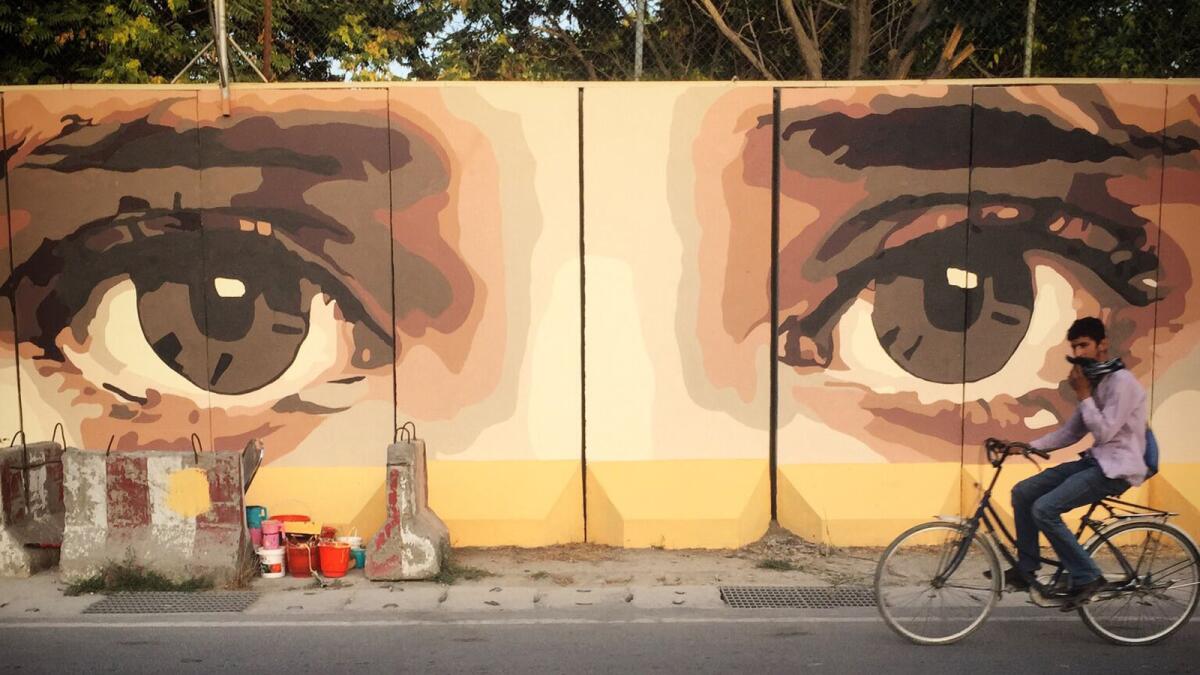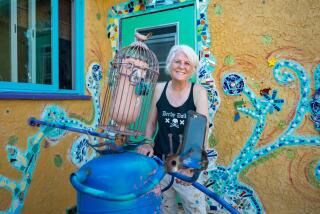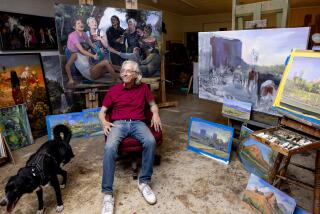In the heart of Kabul, the eyes are watching

Artist Kabir Mokamel says the eyes staring out into the city are meant to encourage people to confront the things that often stay hidden in Afghanistan’s capital.
Reporting from Kabul, Afghanistan — For years, when he walked the streets of Kabul, Kabir Mokamel felt stifled by the cold gray concrete blast walls that have come to line this once-green city.
“I feel like we are under siege,” the Afghan Australian artist said. “Everywhere we go, we are surrounded by barriers.”
Four years after returning to Afghanistan from Australia, where he sought refuge during fighting in the 1990s, Mokamel has embarked on a street art project that he hopes will make the walls “disappear.”
His plan is to paint the concrete slabs with richly colored murals addressing what he views as the ills of Afghan society that have emerged in the 14 years since the U.S.-led invasion toppled a Taliban government.
In early July, Mokamel and a band of volunteers unveiled their centerpiece image: Two wide-open brown eyes staring directly at oncoming traffic.
The piercing eyes, based on those of an Afghan Sikh woman, are painted across a blast wall that hides a building belonging to the National Directorate of Security, the Afghan intelligence agency.
The location was not an accident. The dark eyes staring out into the city, Mokamel said, are meant to encourage people to confront the things that often go hidden in this capital city, one example being corruption.
“We want to make people think,” Mokamel said as his team of volunteer artists, both male and female, put the finishing touches on the woman’s eyes.
Two statements painted in the Dari language on either side of the eyes drive home the point. “Corruption is not hidden from God and the people’s gaze,” reads one. “I see you,” reads the other.
Two years ago, he painted a smaller set of eyes on a wall behind the education ministry. Afghanistan has consistently ranked among Transparency International’s top five most corrupt countries. In a recent United Nations survey, nearly half of Afghans reported paying a bribe to a government department.
Their muse, the Sikh woman, is also a symbol of inclusiveness, Mokamel said. Hindus and Sikhs once numbered more than 100,000 across Afghanistan, but most have emigrated since the 1990s because of violence and discrimination, leaving only about 300 families in the country.
Mokamel said he hopes the murals will help launch a “citizen’s movement.” On one recent evening, passers-by who stopped to ask Mokamel or his volunteer team about the image were invited to pick up a brush and help paint a segment.
“This city is all of ours, and we want everyone to have ownership over this,” said Omaid Sharifi, 28, who helped Mokamel throughout the project.
The volunteers have told Mokamel they found painting the mural, which took five days, to be therapeutic.
Before beginning the project, Mokamel and Sharifi asked the intelligence agency, the Kabul mayor’s staff and President Ashraf Ghani’s office for permission. They said they were delighted by the response, which was perhaps surprising given the anti-corruption theme.
One high-level official in the presidential palace gave them money out of his own pocket to buy paint, Sharifi said.
Even the security directorate, which has a reputation for being closed off to the public, has joined in. A watchman in a lookout tower above the walls stood guard over the painters. Local traffic police diverted cars while the crew took a moment to stand back and admire their work from the street.
The mayor’s office sent municipal workers to whitewash a wall across the street that will serve as the canvas for their next piece: panels of men and women of all ages, pointing out into the crowded streets, representing the idea that corruption will not go unnoticed.
Some previous attempts at public art, particularly those funded by international donors, have been criticized by some Afghans. Sharifi was proud that his project required no foreign funding. He and his team spent less than $700 to buy paint, brushes and other supplies.
“Whatever we’ve done has been out of our own pockets or through volunteers who either picked up a brush or gave us whatever amount they could spare,” he said.
As they painted, passing taxi drivers rolled down their windows to congratulate and thank them. A fruit juice vendor named Fahim, who runs his cart past the newly painted blast walls, also expressed his appreciation.
“It’s both something new and beautiful,” said Fahim, 40, offering the painters free bottles of juice.
Latifi is a special correspondent.
More to Read
Sign up for Essential California
The most important California stories and recommendations in your inbox every morning.
You may occasionally receive promotional content from the Los Angeles Times.










